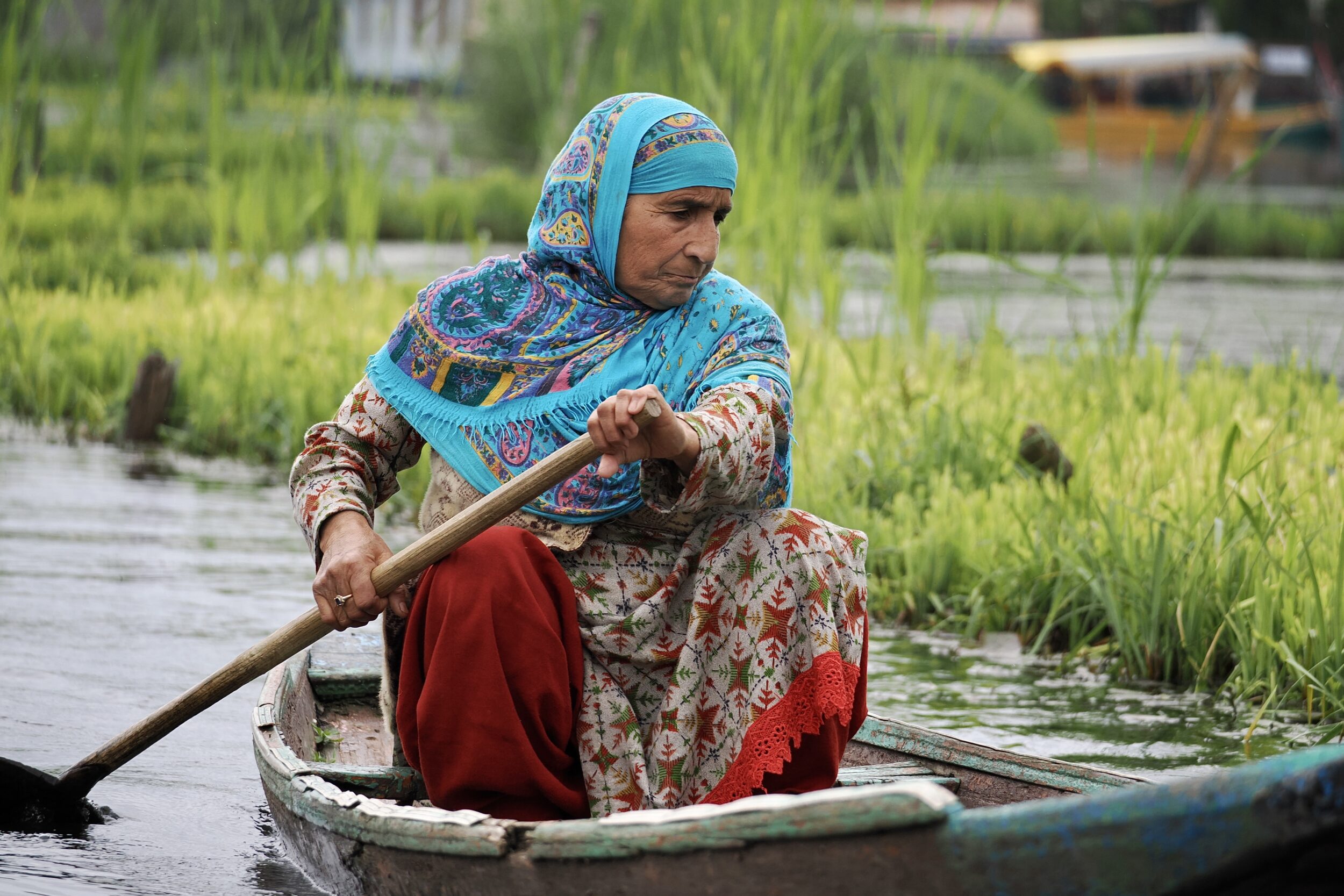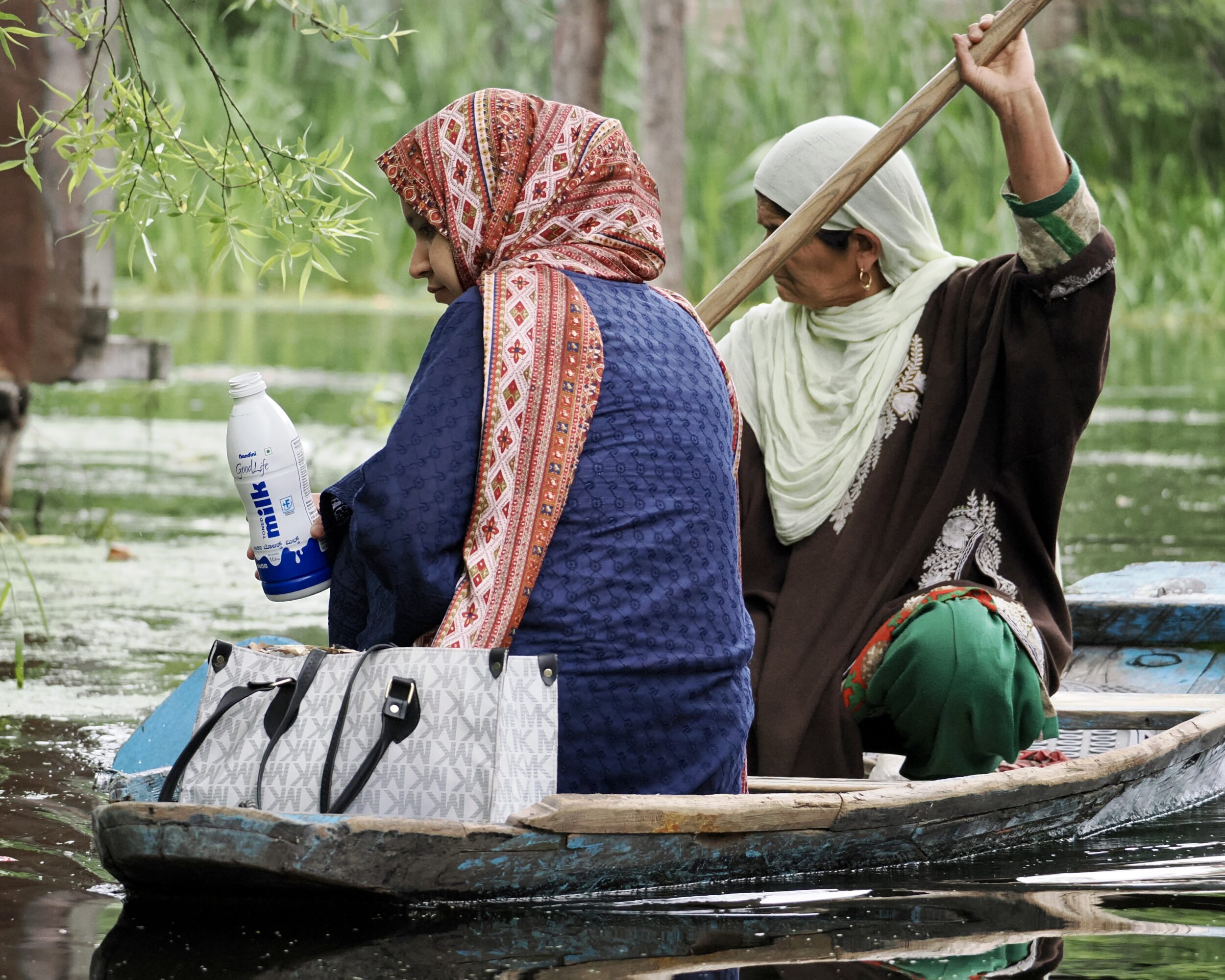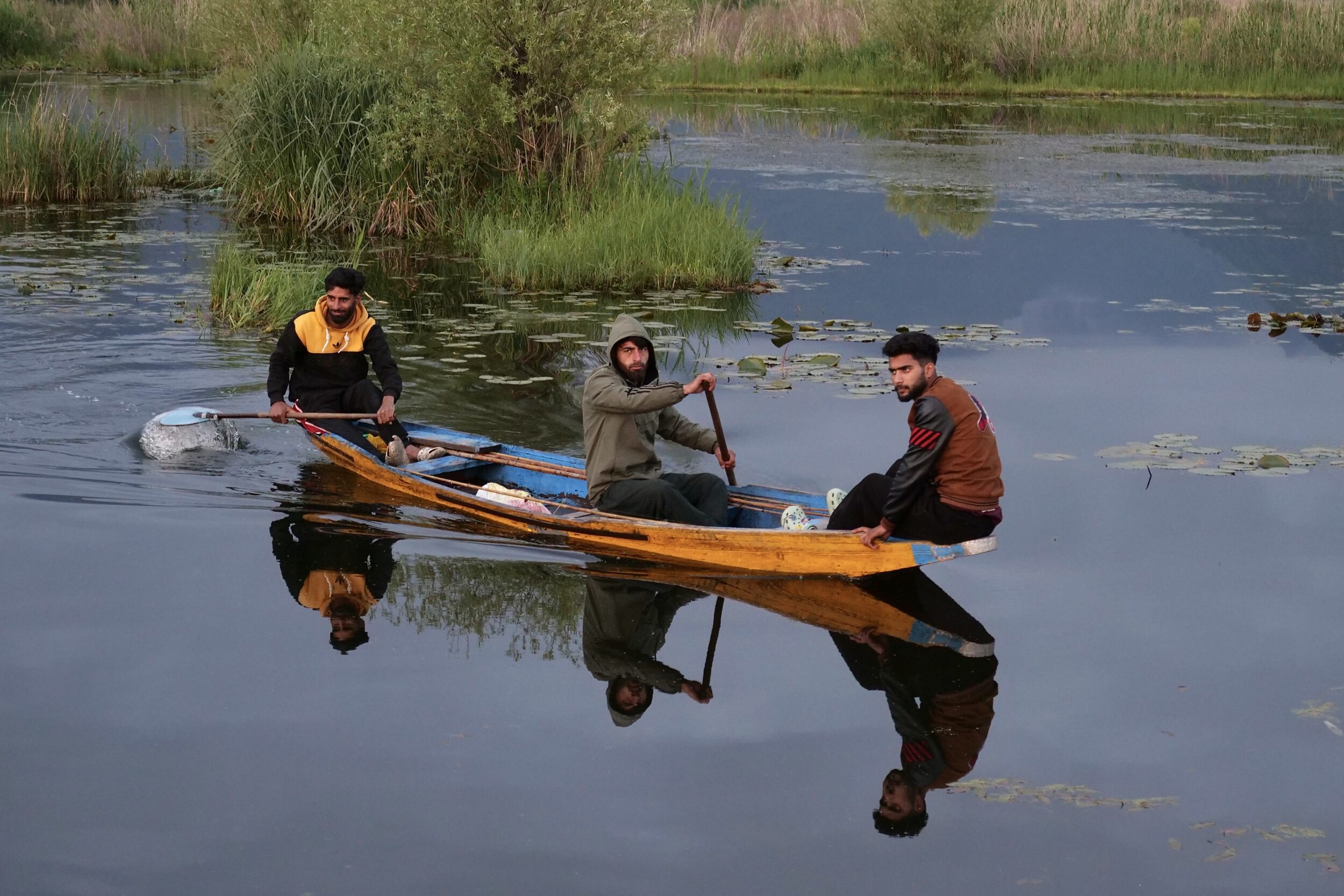This post’s pictured persons are not directly engaged in Dal Lake’s now-dominant industry: tourism.
They are members of the circa ten thousand indigenous half-amphibious families who row Shikaras on the lake, clean it, cultivate vegetables and fish in the lake for their livelihood.
(The above-mentioned are not Dal Lake’s only human residents; the total current number is circa seventy thousand. Then there are the tourists who stay on its more than nine hundred houseboats, almost all of which expel untreated waste. And don’t forget that only circa half of the human waste from the other 1.7 million residents of Srinagar – plus who knows how many tourists’ ditto – is properly “treated”. Much of that also ends up in Dal Lake)
Most watercraft on Dal Lake are Shikaras – distinctive, locally-made wooden boats.
Shikaras owned by those who transport tourists, or sell things to them, are colourful, usually elaborately decorated, and “comfortable”; they often have a name which includes the word “deluxe”.
The “non-touristy” Shikaras are unnamed, smaller, plain; their occupants are fully exposed to sun, rain and snow.
Of course, “tourist” and non-tourist Skikaras do cross watery “paths”.
The image below might look like it has come from “another world”, but I took it less than two minutes after the previous chapter’s photos of thronged, tourist-laden Shikaras.

The built-up area within the lake has increased more than 40 times during the past 155 years, from 0.05 sq km in 1859, to 2.02 sq km in 2013.
“The massive and injudicious urbanisation of the lake interiors, with no provision for the scientific disposal of the household wastes, has adversely affected the quality of the lake waters,” the study says.
A 2020 study also shows the built-up increased in the catchment area of the lake–from 20.15 sq km in 1980 to 38.6 sq km in 2018. Similarly, aquatic vegetation increased from 2.03 sq km in 1980 to 5.7 sq km in 2018. Aquatic vegetation, which is not part of the natural ecosystem, uses up oxygen, depriving other living beings–and could result in an area turning into a swamp.

All of this post’s italicised quotations come from an article headlined, How Rising Pollution is Affecting Dal Lake, published by IndiaSpend in January this year.
The article acknowledges that in recent years some “efforts” to rehabilitate Dal Lake have been announced, and (sometimes) made.
It is (appropriately, I think) highly sceptical about their adequacy and integrity.
Certainly, in 2024, Dal Lake is far from pristine – it still has too many people living on it, too much untreated effluent going into it, and its fish catch and vegetable production remain in a state of serious decline.
The article begins by quoting Biba Banoo – a local fisherwoman, of sixty-something years’ experience:
The lake is becoming barren.
its final paragraph:
Every day at around 10 a.m., a boat of the Srinagar Municipal Corporation arrives to collect waste from the Dal dwellers. “This is just a make-believe clean picture of the lake,” Banoo says. “It never caters to the backwaters.”
Click here for the full essay, which is well-illustrated with various photos taken at lake surface level, plus satellite-derived images.
